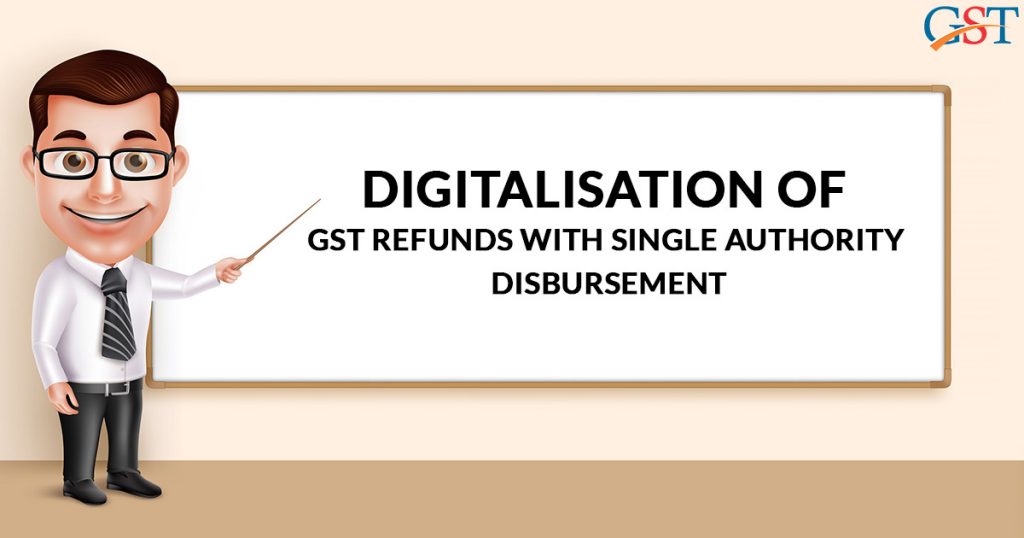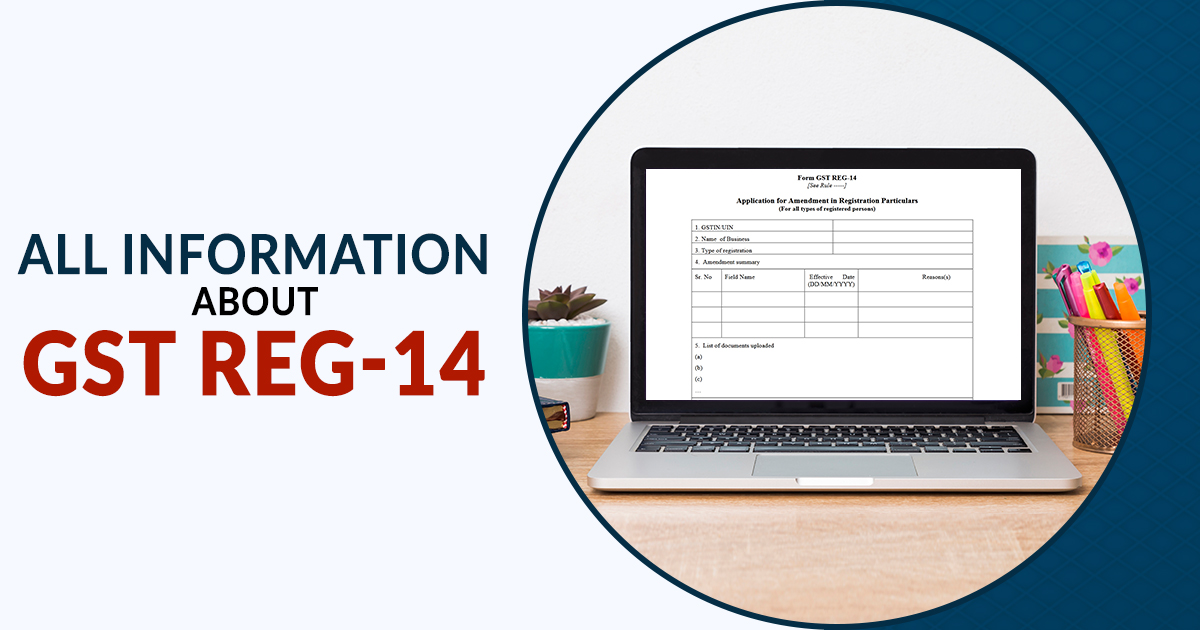
Refund application goes online and the authority for the payment of these refund goes in a single hand. Now the taxpayers shall file refund application online/ electronically in form RFD-01 whereas the disbursement of GST refund will be done through the Public Financial Management System (PFMS) by the certified bank of Central Board of Indirect Taxes and Customs (CBIC).
The notable points here are that GST form RFD-01 has replaced GST form RFD-01A and the bank account number you provide to the CBIC should be valid. This implies that GST form RFD-01A will now no longer be used to file a refund application, however, you can check the status of your previously filed refund application in form RFD-01A but now the application will have to be filed in form RFD-01.
The second important point demands your attention to the validity of your bank account details because the amount will be credited to your account only after the proper verification by PFMS which means if PFMS fails to verify your bank account details, it shall hold your refund and notify you about the same through mail or message. In such case, you will be required to change your bank details via non-core amendment in registration in REG-14 and update the new account details by clicking on ‘Update Bank Account’ Functionality given with the ARN of the refund application.
The validation status of bank account details can be checked by the taxpayers on the dashboard as well without waiting for the email or message from PFMS.
Read Also: How to Change Email ID & Mobile Number on GST Portal?
GST RFD-01: In short, now form RFD-01 will be used by the taxpayer for refund application, instead of form RFD-01A which is now unavailable on the portal. The application shall be filed and processed electronically. The status of the refund application, as well as bank account validation, can be easily checked.
GST RFD-02: Now, we shall come to form RFD-02 which is an acknowledgment of refund by the tax officer to the taxpayer. It will now be processed electronically by the tax officer and can be accessed by the taxpayer on the dashboard. Instead of the previous manual method, it has also been electronized and same will be communicated through emails or message to the taxpayer by the tax officer.
GST RFD-03: form RFD-03 is notice of Deficiency on Application for Refund or a Deficiency memo which is sent by tax officer to the taxpayer in order to get the fresh refund application after the rectifications in the current one by the taxpayer. Initially, this deficiency memo also used to be issued manually without auto recredit of cash or ITC.
GST RFD-04: In some cases, the GST officer issues Provisional Refund Order in form RFD-04 to the taxpayer. For instance, when the taxpayer faces a shortfall in working capital because of not getting the refunds as the refunding is a time-consuming process, the taxpayer may provide 90% of refund to the taxpayer as a Provisional Refund Order. Now the issuance of Provisional Refund Order is updated from manual to digital wherein the taxpayer is communicated through emails and messages and can check the provisional sanction order in RFD-04 on his dashboard.
GST RFD-05: RFD-05 is the payment order reflecting the net amount of refund along with interest (if any) which is issued by the GST Officer to the taxpayer. After the issuance of RFD-05 to the taxpayer, the PFMS verifies the bank account details after which the refund is credited to the bank account of the taxpayer electronically.
If the bank account detail is invalidated, the taxpayer will need to change the details via non-core amendment in registration in REG-14 
Payment order in RFD-05, bank account validation status and disbursement status can be viewed by the taxpayer on his dashboard. Manual issuance of RFD-05 by the tax officer is not completely electronic and unlike previous processing, now tax officers need not send a copy to the central nodal authority as well as state AAs for refund payment.
GST RFD-06: RFD-06 is the Final order about Refund Sanction or Rejection. The GST officer issues this order electronically to the taxpayer and the status of the same can be viewed by the taxpayer on his dashboard. Its processing has also been updated from manual to electronic.
GST RFD-07: RFD-07 is the withholding order issued by the GST officer when the amount of refund claimed by the applicant is completely adjusted against any overdue or pending payments (PART A) or when the refund is held back because of some specific reasons (PART B). Its processing is completely electronic now and the status can be seen by the taxpayer on his dashboard. The tax officer communicates the same electronically to the taxpayer through mails and messages.
GST RFD-08: RFD-08 is the show cause notice issued by the GST officer when the partial or whole amount of refund is unacceptable or unreasonable. This is generally issued when the refund application is rejected. Digital issuance of this notice has superseded manual issuance. The status can be checked on the dashboard and taxpayers are communicated through mails or messages.
Note: The taxpayer needs to reply to the SCN within the period of 15 days after receiving the SCN. If the taxpayer fails to reply within the stipulated time-frame, the tax officer can act on the refund application.
GST RFD-09: A taxpayer responds to the show cause notice in form RFD-09. form RFD-09 is available on the dashboard and taxpayer has to answer the show cause notice by the tax officer in this form in an electronic mode along with the advocating documents which can be uploaded through RFD-09. Now manual processing of form RFD-09 can lead to the rejection of reply, by the GST officer.
GST PMT-03: PMT-03 is the order by the tax officer to the taxpayer to re-credit the amount to cash or credit ledger when the refund claim is dismissed or rejected. The order is sent electronically, however, the taxpayer needs to submit an undertaking manually to the tax officer that he will not file an appeal against the refund order if he/she wishes to receive a recredit of the dismissed amount.
Previously, the refund order details used to be uploaded by the tax officer in RFD-01B followed by the arrangement of the ITC to the taxpayer’s ITC ledger. Now the inadmissible ITC shall get auto re-credited to the taxpayer’s electronic credit ledger.
Point to Wrap-up with:
- Refund applications shall be filed in form RFD-01 by the taxpayers.
- RFD-01 form shall be processed electronically/ online by the tax-officer.
- Taxpayers and Tax officers shall communicate electronically.
- The refund amount shall be disbursed only after bank account validation.
- Refund shall be paid by the accredited bank of CBIC via PFMS.
- Status regarding each form can be viewed online by the taxpayer on his dashboard along with bank details validation status and status of disbursement.